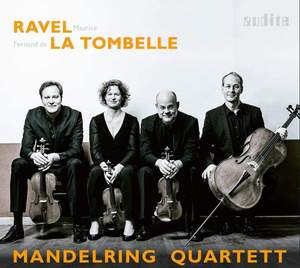Although Maurice Ravel, in his string quartet, explicitly refers to the quartet written ten years earlier by his colleague, Claude Debussy, he opts to follows his own, new path and arrives at a distinctive Ravelian tone: colourful, refined and saturated with that flair of the artificial which also characterises his beloved porcelain and glass artworks, ornamental shrubs and bonsai trees. At the same time, the quartet is meticulously constructed and so rich in ingenious details that it offers room for discovery even after repeated listening.
A great unknown and certainly one of the most fascinating protagonists of French musical life in the late nineteenth and early twentieth centuries is Fernand de La Tombelle: pianist, organist, writer, astronomer, visual artist, author of a guide on a traditional recipe involving foie gras and truffles, passionate cyclist – and prolific composer: his oeuvre comprises more than 500 works, including a large number of chamber music works. His string quartet written in 1895 is rooted in the Viennese classical tradition and yet is unmistakably French: highly expressive, harmonically colourful and extremely elegant at the same time – a work that makes one want to discover more by La Tombelle!




